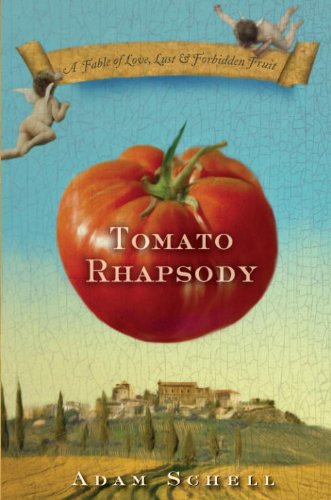Tomato Rhapsody
Set in 16th-century Italy, this first novel by Adam Schell is advertised as “a fable of love, lust and forbidden fruit.” In it, Schell, who is a former chef, offers readers his version of how the tomato, or the “love apple,” first appeared in Tuscany. Schell’s story follows a pair of star-crossed lovers (Davido is Jewish and already betrothed, Mari is Catholic), Mari’s villainous olive-tycoon stepfather, and, at their center, Davido’s grandfather, Nonno, who brought the first tomatoes to Italy as a result of his voyages with Columbus. There is also the new priest in town (The Good Padre), who speaks in rhyme.
Along the way, the author toys with history (for example, he creates a false Medici family tree, the Meduccis, rather than the Medicis), while walking across the stage himself in passages that read like pure nonfiction. The footnotes sprinkled here and there are largely unnecessary and seem, therefore, condescending, while the rhyming speech becomes monotonous. All this is, of course, meant to be clever, delivered with “spectacular wordplay,” according to the book jacket, and, perhaps, some readers might find it so.
But take for instance, this sentence: “The man seemed genuinely overcome, as if the mass of his bafflement suddenly slipped through a crack in his discretion.” Mine, too.










